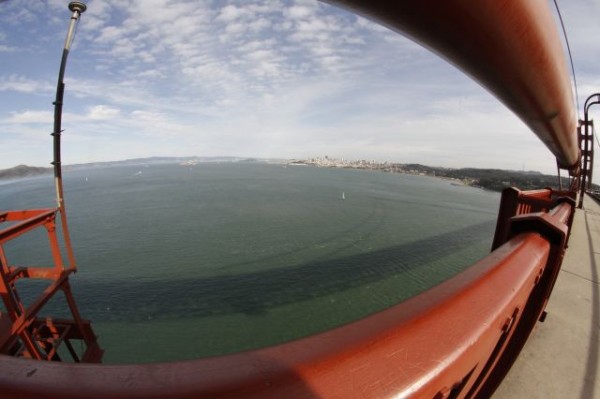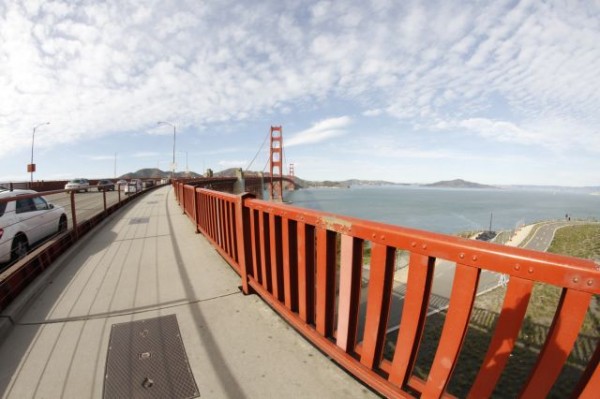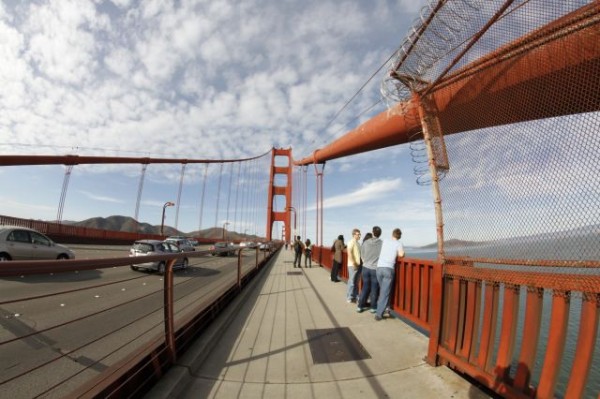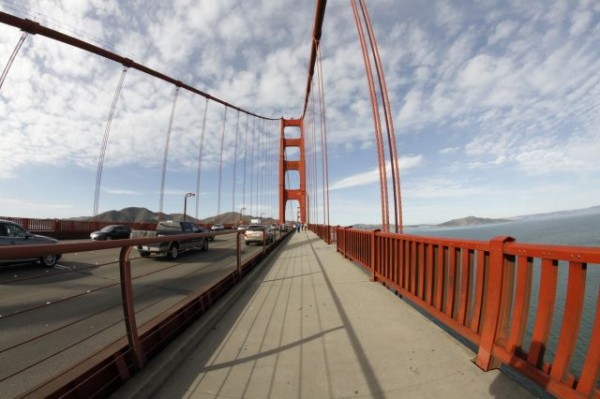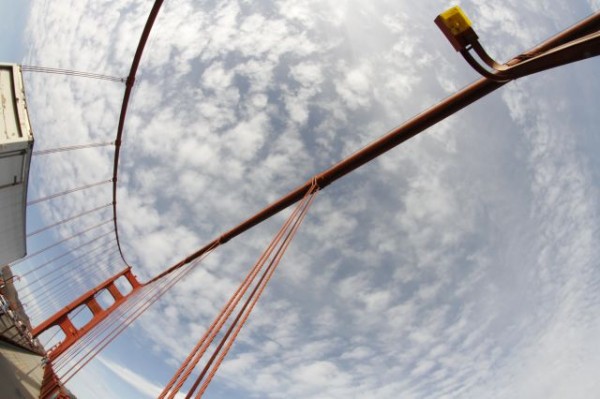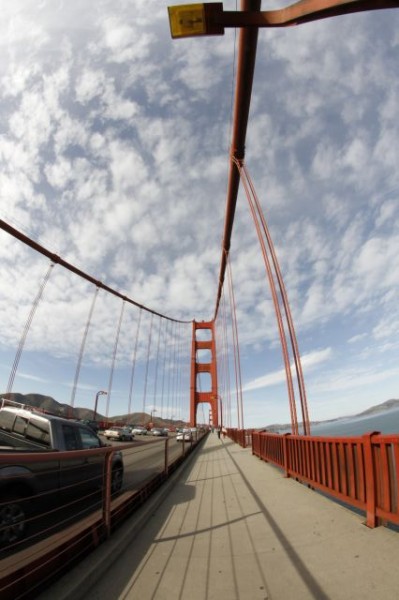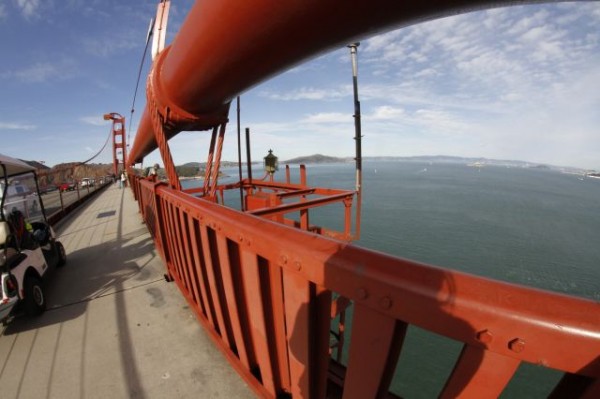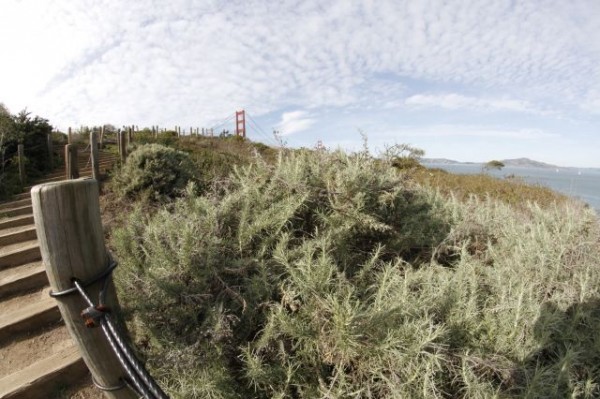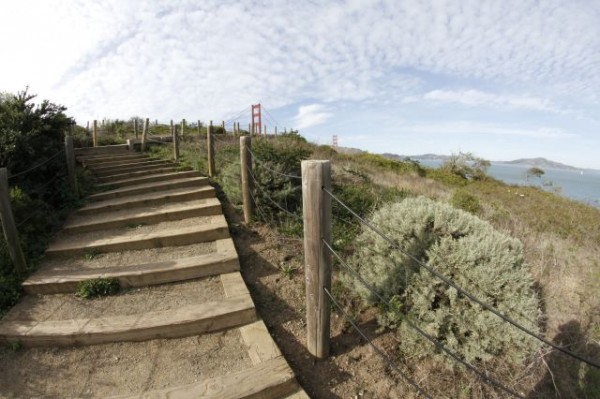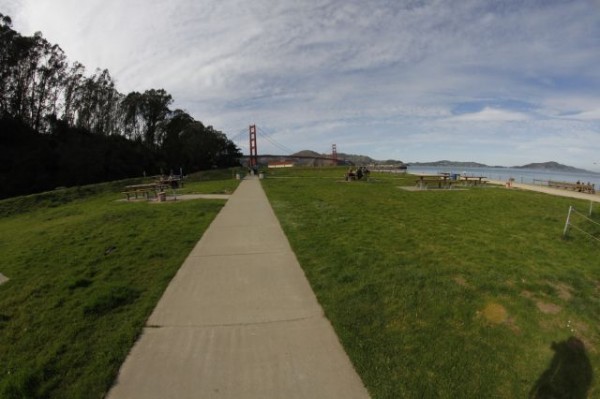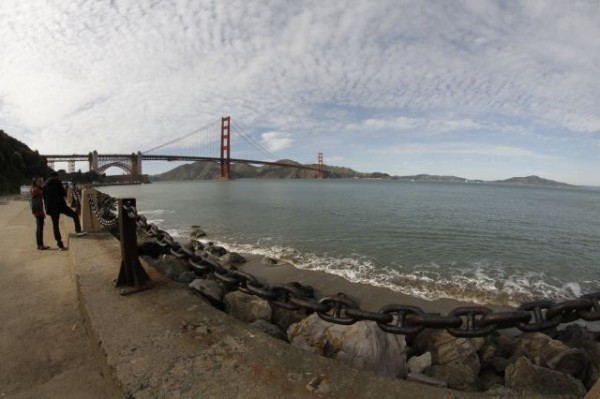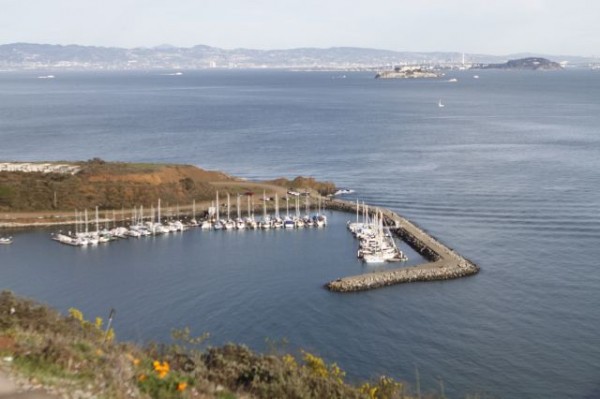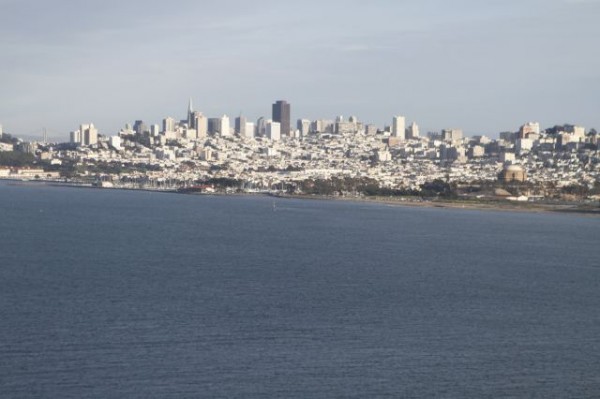Whlie I’ve been in San Francisco for awhile now and have crossed the Golden Gate Bridge umpteen times by car, I still had never crossed the nearly 9,000 foot long bridge that connects San Francisco with Marin County, bridging both Route 101 and California State Route 1 across the strait. It’s a mile-wide across a three mile long channel between the San Francisco Bay and the Pacific Ocean.
Tourists around the world know the bridge is one of the most internationally recognized symbols of San Francisco and has been declared one of the Wonders of the Modern World by the American Society of Civil Engineers.
And so, about a week ago, I ventured across the bridge by foot and back again. Below are some of the shots I captured while on the bridge as well as shots taken from the San Francisco side approaching the bridge and of the city from the water’s edge in Marin to the north. It’s well worth doing next time you make it to America’s west coast. Enjoy!
Taken on the beach walking up to where the bridge starts on the San Francisco side. We started our walk far up along the beach so we could lengthen our walk.
Shots taken from the Marin side once you reach the other side.
The bridge has a lot of history as you can imagine. Below is its beginnings and a historical look at how the bridge came to being. (below taken from Wikipedia)
Although the idea of a bridge spanning the Golden Gate was not new, the proposal that eventually took hold was made in a 1916 San Francisco Bulletin article by former engineering student James Wilkins. San Francisco’s City Engineer estimated the cost at $100 million, impractical for the time, and fielded the question to bridge engineers of whether it could be built for less. One who responded, Joseph Strauss, was an ambitious engineer and poet who had, for his graduate thesis, designed a 55-mile-long (89 km) railroad bridge across the Bering Strait.
At the time, Strauss had completed some 400 drawbridges—most of which were inland—and nothing on the scale of the new project. Strauss’s initial drawings were for a massive cantilever on each side of the strait, connected by a central suspension segment, which Strauss promised could be built for $17 million.
Local authorities agreed to proceed only on the assurance that Strauss alter the design and accept input from several consulting project experts. A suspension-bridge design was considered the most practical, because of recent advances in metallurgy.
Strauss spent more than a decade drumming up support in Northern California. The bridge faced opposition – including litigation – from many sources. The Department of War was concerned that the bridge would interfere with ship traffic; the navy feared that a ship collision or sabotage to the bridge could block the entrance to one of its main harbors. Unions demanded guarantees that local workers would be favored for construction jobs. Southern Pacific Railroad, one of the most powerful business interests in California, opposed the bridge as competition to its ferry fleet and filed a lawsuit against the project, leading to a mass boycott of the ferry service.
In May 1924, Colonel Herbert Deakyne held the second hearing on the Bridge on behalf of the Secretary of War in a request to use federal land for construction. Deakyne, on behalf of the Secretary of War, approved the transfer of land needed for the bridge structure and leading roads to the “Bridging the Golden Gate Association” and both San Francisco County and Marin County, pending further bridge plans by Strauss.[Another ally was the fledgling automobile industry, which supported the development of roads and bridges to increase demand for automobiles.
The bridge’s name was first used when the project was initially discussed in 1917 by M.M. O’Shaughnessy, city engineer of San Francisco, and Strauss. The name became official with the passage of the Golden Gate Bridge and Highway District Act by the state legislature in 1923.
Preliminary discussions leading to the eventual building of the Golden Gate Bridge were held on January 13, 1923, at a special convention in Santa Rosa, CA. The Santa Rosa Chamber was charged with considering the necessary steps required to foster the construction of a bridge across the Golden Gate by then Santa Rosa Chamber President Frank Doyle (the street Doyle Drive leading up to the bridge is named after him). On June 12, the Santa Rosa Chamber voted to endorse the actions of the “Bridging the Golden Gate Association” by attending the meeting of the Boards of Supervisors in San Francisco on June 23 and by requesting that the Board of Supervisors of Sonoma County also attend. By 1925, the Santa Rosa Chamber had assumed responsibility for circulating bridge petitions as the next step for the formation of the Golden Gate Bridge.

Renee Blodgett is the founder of We Blog the World. The site combines the magic of an online culture and travel magazine with a global blog network and has contributors from every continent in the world. Having lived in 10 countries and explored nearly 80, she is an avid traveler, and a lover, observer and participant in cultural diversity.
She is also the CEO and founder of Magic Sauce Media, a new media services consultancy focused on viral marketing, social media, branding, events and PR. For over 20 years, she has helped companies from 12 countries get traction in the market. Known for her global and organic approach to product and corporate launches, Renee practices what she pitches and as an active user of social media, she helps clients navigate digital waters from around the world. Renee has been blogging for over 16 years and regularly writes on her personal blog Down the Avenue, Huffington Post, BlogHer, We Blog the World and other sites. She was ranked #12 Social Media Influencer by Forbes Magazine and is listed as a new media influencer and game changer on various sites and books on the new media revolution. In 2013, she was listed as the 6th most influential woman in social media by Forbes Magazine on a Top 20 List.
Her passion for art, storytelling and photography led to the launch of Magic Sauce Photography, which is a visual extension of her writing, the result of which has led to producing six photo books: Galapagos Islands, London, South Africa, Rome, Urbanization and Ecuador.
Renee is also the co-founder of Traveling Geeks, an initiative that brings entrepreneurs, thought leaders, bloggers, creators, curators and influencers to other countries to share and learn from peers, governments, corporations, and the general public in order to educate, share, evaluate, and promote innovative technologies.

